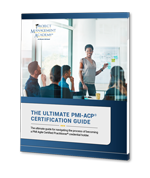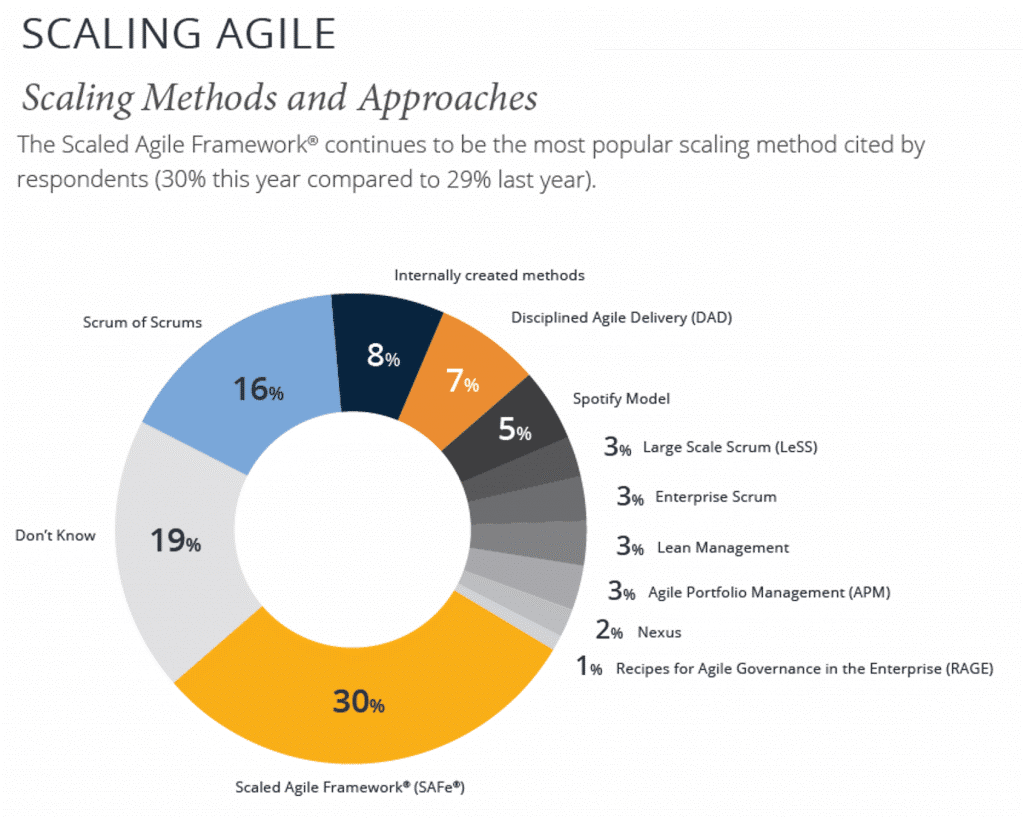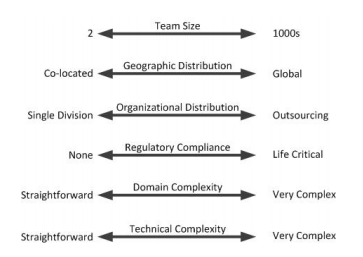The 13th Annual State of Agile Survey, released in 2019 and reflecting a global audience, revealed companies are moving to agile to increase productivity, improve team moral, and decrease project costs. Those same business drivers are embedded in the emerging area of Disciplined Agile (DA) which has continued to grow since it’s 2012 inception at IBM. In fact, The Disciplined Agile (DA) toolkit became part of the Project Management Institute, Inc. (PMI) in August 2019, and with that, 4000 DA credential holders became part of PMI. Whether you are growing your company’s in-house Agile skill set or looking for a tool kit to connect existing Agile frameworks, Disciplined Agile will help.
On this page:

Download the Ultimate Guide to learning about the PMI-ACP Certification.
Origin of Disciplined Agile
You may find Disciplined Agile referred to as DA or as DAD, for Disciplined Agile Delivery. Scott Ambler, working at IBM Rational, worked with others including Mark Lines, to turn their observations of software project work into a scalable, sustainable toolkit. In an interview with Ambler about the PMI acquisition of DA, he shared that the toolkit is agnostic pulling from Scrum, XP, RUP, Kanban, Lean Startup and others.
Where Disciplined Agile Stands Within Scaling Methods
As of 2019, DAD is ranked higher than the older Lean Management approach in Scaling Agile methods.
 Figure 1 13th Annual State of Agile Report
Figure 1 13th Annual State of Agile Report
It has continued to grow in use in each year of the international State of Agile research report.
What is Disciplined Agile
DA is not a methodology in the way that Kanban or Scrum are. It is a tool kit that pulls from across Agile resources to provide true business agility possibilities for the enterprise. The official definition of DA from the Project Management Institute’s (PMI) states:

The founders noted that there are 6 scaling factors and list those in their “Foundation for Scaling Agile” white paper.
 Figure 2 Process Scaling Factors
Figure 2 Process Scaling Factors
Ambler and Lines’ describe DAD as an Agile framework that “…strives to provide a coherent, end-to-end strategy for how agile solution delivery works in practice.”
Who Should Pursue Disciplined Agile
For those familiar with the PMI’s Project Management Body of Knowledge (PMBOK), the DAD is of a similar vein as it “…represents a soup to nuts approach to agility and even more…” In the official introduction to DAD, the PMI explains that part of the business value of DAD is it enables connections of work across “Finance, Portfolio Management, Solution Delivery (software development), IT Operations, Enterprise Architecture, Vendor Management and many others.
Those seeking to realize business value across workstreams, including but not limited to Business Leaders, Project Managers and Agile Practitioners, will benefit from learning the DAD toolkit. As the COVID-19 pandemic continues to impact and change how businesses manage work, build teams, and monitor productivity, business agility is critical. And business agility is the founding concepts behind Disciplined Agile Delivery.
How to Get Started
Before you get overwhelmed by the 20+ books on DAD or make any announcements that existing Agile practices are on the way out at your company, continue to build your knowledge of what DAD is. A great starting point is hearing from the founders themselves via their “Foundation for Scaling Agile” white paper.
Note that the 13th Annual State of Agile Survey reported that the top three responses for the most valuable help for agile practices are: “Internal agile coaches”, “Executive sponsorship”, and “Company-provided training”. To that end, pursue training from proven vendors such as the Disciplined Agile: Foundations of Agile virtual class. It’s a practical course that teaches you how to implement agile practices in your project.
A strategic approach to your team’s Agile training will have a more positive outcome. One of the best ways to make sure that your team is successful with Agile is by providing a training session that’s accessible to everyone. In addition, it’s important to keep the sessions updated for current practices and tools.


 New Horizons
New Horizons
 Project Management Academy
Project Management Academy
 Six Sigma Online
Six Sigma Online
 TCM Security
TCM Security
 TRACOM
TRACOM
 Velopi
Velopi
 Watermark Learning
Watermark Learning
 Login
Login




 New Horizons
New Horizons
 Project Management Academy
Project Management Academy
 Velopi
Velopi
 Six Sigma Online
Six Sigma Online
 TCM Security
TCM Security
 TRACOM
TRACOM
 Watermark Learning
Watermark Learning